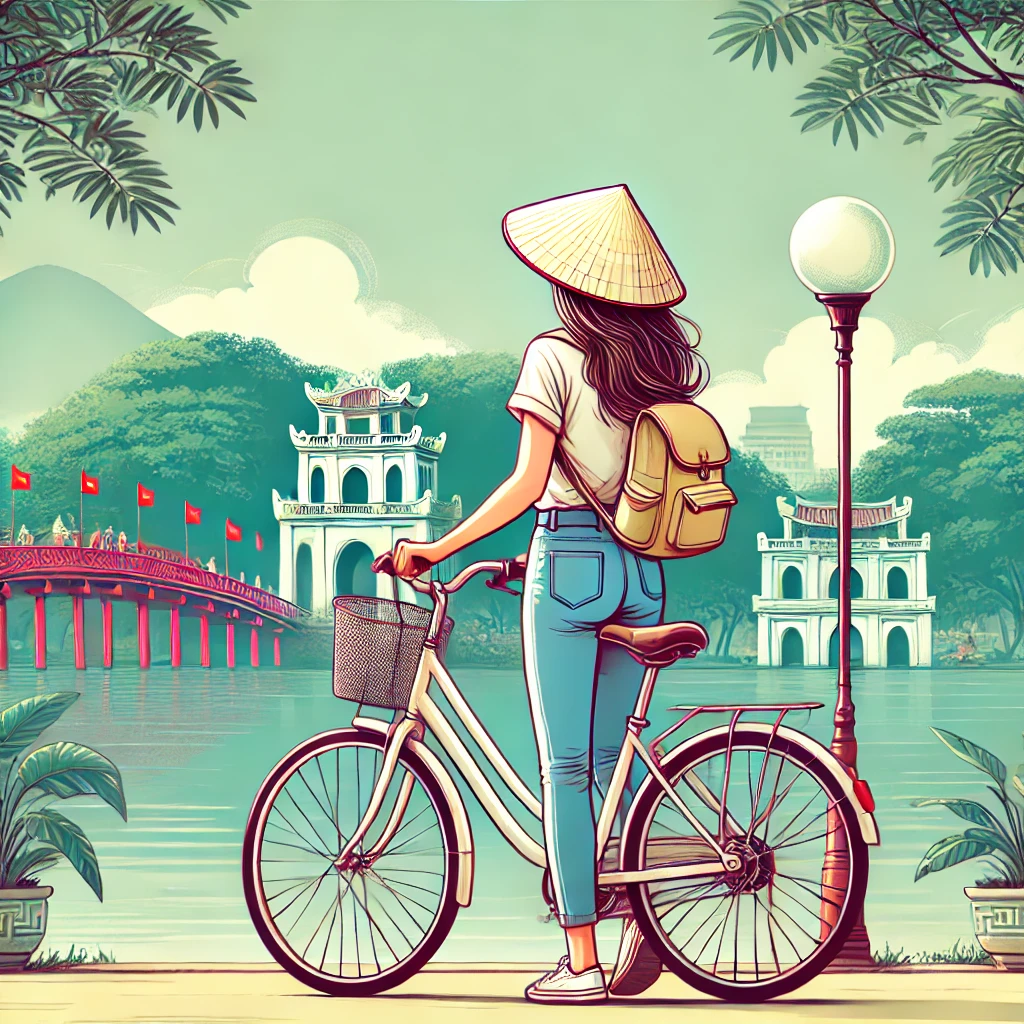Cambodia’s Weather
Last Updated on 10 August, 2024 by admin
Cambodia, with its lush landscapes and rich cultural heritage, is deeply influenced by its tropical climate. This warm and humid climate plays a significant role in shaping the country’s natural beauty, from the verdant rice paddies to the dense jungles that surround ancient temples. The Cambodian climate is characterised by two main seasons: the dry season and the rainy season, each offering unique experiences for visitors. Understanding these weather patterns is crucial for planning a trip to Cambodia, as they can greatly affect travel itineraries and the overall experience of exploring this captivating Southeast Asian nation.
The Dry Season (November to April)
Characteristics
The dry season in Cambodia, which runs from November to April, is widely regarded as the best time to visit the country, attracting the highest number of tourists due to its ideal weather conditions. During these months, Cambodia enjoys clear blue skies, minimal rainfall, and comfortably warm temperatures, which typically range between 25°C and 30°C. The low humidity during this period makes the heat much more bearable, creating a pleasant environment for outdoor activities and exploration. This season also marks the end of the monsoon rains, leaving behind lush, green landscapes that are still vibrant from the recent wet season, yet without the muddy conditions that can hamper travel plans. The dry, cool breezes that sweep across the country further enhance the comfort of travelling during this time, making it the prime season for tourists looking to experience the best of what Cambodia has to offer.
Ideal for
Visiting Angkor Wat and Other Temples
The dry season provides the perfect backdrop for exploring Cambodia’s most famous attraction, Angkor Wat, and the surrounding temples in the Angkor Archaeological Park. The absence of rain ensures that the temple grounds are dry and easily navigable, allowing visitors to wander through the ancient ruins without the inconvenience of slippery paths or muddy terrain. The clear, sunny skies highlight the intricate carvings and majestic architecture of these ancient wonders, making it an ideal time for photography and fully appreciating the details of the temples. Early mornings and late afternoons during the dry season offer particularly stunning light for capturing the temples, with the added bonus of cooler temperatures. Beyond Angkor Wat, other temples such as Bayon, Ta Prohm, and Banteay Srei also become more accessible and enjoyable to explore during this period, with fewer weather-related disruptions.
Exploring the Beaches and Islands
Cambodia’s coastline, with its pristine beaches and idyllic islands, is at its most inviting during the dry season. Popular coastal destinations like Sihanoukville, Kep, and the islands of Koh Rong and Koh Rong Samloem are blessed with calm, crystal-clear waters and sun-drenched beaches, making it the perfect time for swimming, sunbathing, and water sports. The dry season’s favourable conditions also make it an excellent time for diving and snorkelling, with the underwater visibility at its best, allowing you to fully appreciate the vibrant marine life and coral reefs. Additionally, the dry season is ideal for island-hopping adventures, as the calm seas make boat trips between islands smooth and enjoyable. The warm, tropical weather invites long, lazy days spent on the beach, while the cooler evenings are perfect for seaside dining and enjoying the laid-back atmosphere of Cambodia’s coastal communities.
Enjoying Outdoor Activities
For adventure seekers, the dry season opens up a world of possibilities for outdoor activities across Cambodia. Trekking through the dense jungles of the Cardamom Mountains or the Virachey National Park becomes a much more manageable and rewarding experience when the trails are dry and the weather is cool. The dry season also enhances the experience of exploring Cambodia’s countryside by bicycle, with routes that take you through picturesque villages, rice paddies, and along the banks of the Mekong River. The cooler temperatures and clear skies provide the perfect conditions for long rides, offering unobstructed views of Cambodia’s stunning rural landscapes. Wildlife enthusiasts will also find the dry season advantageous for visiting Cambodia’s nature reserves and sanctuaries, where the lack of rain makes spotting animals in their natural habitats easier. Whether you’re hiking to remote waterfalls, cycling through ancient forests, or embarking on a river cruise, the dry season in Cambodia offers the perfect conditions for outdoor exploration and adventure.
In summary, the dry season in Cambodia, with its pleasant temperatures, clear skies, and minimal rainfall, creates the ideal environment for travellers to explore the country’s rich cultural heritage, stunning beaches, and diverse natural landscapes. Whether you’re captivated by the ancient temples of Angkor, drawn to the serene beauty of Cambodia’s islands, or eager to experience the thrill of outdoor adventures, the dry season provides the perfect setting for an unforgettable journey through this fascinating Southeast Asian nation.
The Rainy Season (May to October)
Characteristics
The rainy season in Cambodia, spanning from May to October, is marked by high humidity, frequent rain showers, and a remarkable transformation of the landscape into a lush, verdant paradise. During this period, the country experiences a significant increase in rainfall, with short, intense downpours typically occurring in the afternoon or evening. These rains, while heavy, are often brief, allowing for periods of sunshine and clear skies in between. The average temperatures during the rainy season range from 27°C to 35°C, with the humidity making the air feel warmer and more tropical. Despite the higher humidity and occasional downpours, the rainy season brings a unique charm to Cambodia, as the monsoon rains rejuvenate the land, filling rivers, replenishing lakes, and turning the countryside into a vibrant green expanse.
Advantages
Fewer Crowds at Tourist Attractions
One of the significant benefits of travelling during the rainy season is the reduced number of tourists at popular attractions. Sites like Angkor Wat, which are usually bustling with visitors during the dry season, become more tranquil, allowing for a more intimate and relaxed exploration. The reduced crowds mean shorter queues, more personal space, and the rare opportunity to experience these iconic landmarks without the usual hustle and bustle, making your visit more enjoyable and peaceful.
Lower Prices for Accommodation and Tours
The rainy season is considered the low season for tourism in Cambodia, which translates to significant savings for travellers. Many hotels, resorts, and guesthouses offer discounted rates during this time, making it an excellent opportunity for budget-conscious travellers to enjoy high-quality accommodations at a fraction of the cost. Additionally, tour operators often reduce their prices, providing more affordable options for guided tours, excursions, and activities. This season allows you to stretch your budget further, enabling you to experience more of what Cambodia has to offer without breaking the bank.
Witnessing the Countryside’s Transformation into a Vibrant Green Paradise
The rainy season breathes life into Cambodia’s countryside, transforming it into a lush, green paradise. The rice paddies, which cover much of the rural landscape, turn a vibrant shade of green, creating stunning vistas that are a photographer’s dream. The increased water levels in rivers and lakes also make the floating villages and wetlands of the Tonle Sap Lake particularly captivating, as they come to life with the rhythms of the monsoon. The rain brings a sense of renewal and vitality to the land, making this season a beautiful time to witness Cambodia’s natural beauty at its peak.
Considerations
Some Roads and Trails May Be Inaccessible Due to Flooding
One of the challenges of travelling during the rainy season is the potential for flooding, which can render some roads, trails, and rural areas inaccessible. In particular, remote areas and certain parts of the countryside may experience significant waterlogging, making transportation difficult and sometimes impossible. It’s essential to plan your itinerary with flexibility in mind and be prepared for possible changes or delays. Staying informed about local weather conditions and choosing accommodation with good road access can help mitigate some of these challenges.
Outdoor Activities May Be Limited During Heavy Rain
While the rainy season offers many advantages, the frequent downpours can limit the availability of outdoor activities. Heavy rains may disrupt plans for trekking, cycling, or exploring remote temples and natural reserves. Some activities, such as boat tours or visits to certain nature parks, may be temporarily suspended due to safety concerns. To make the most of your trip, it’s advisable to have a mix of indoor and outdoor activities planned and to take advantage of the breaks in the weather to explore. Visiting museums, cultural centres, or enjoying a traditional Khmer massage can be excellent alternatives during rainy periods.
In conclusion, the rainy season in Cambodia, with its lush landscapes, fewer crowds, and lower travel costs, offers a different but equally rewarding travel experience. While it requires a bit more flexibility and preparation due to the weather, the advantages of visiting during this time—such as the serene beauty of the countryside and the tranquil atmosphere at popular sites—make it a season worth considering for your trip. Whether you’re drawn by the savings, the scenery, or the peacefulness, the rainy season provides a unique opportunity to see Cambodia in a way that many tourists miss, allowing for a more personal and immersive journey through this enchanting country.
Regional Variations
Coastal Areas
The coastal regions of Cambodia, including popular destinations like Sihanoukville, Kep, and the islands of Koh Rong and Koh Rong Samloem, experience a milder climate compared to the inland areas. The proximity to the sea brings refreshing sea breezes, which help to moderate the heat, making the coastal areas more comfortable, especially during the peak of the dry season. These breezes create an ideal environment for beach activities, providing a pleasant contrast to the hotter, more humid conditions found further inland.
However, travellers should be aware that the coastal regions are also more susceptible to typhoons during the rainy season, particularly from June to November. While Cambodia is not as frequently impacted by typhoons as neighbouring countries, the possibility still exists, and such storms can bring heavy rainfall, strong winds, and rough seas. It’s important to monitor weather updates closely if you’re planning to visit coastal areas during this period and to be prepared for potential changes in travel plans or the temporary closure of beaches and boat services.
Northeastern Highlands
The northeastern highlands of Cambodia, including provinces like Mondulkiri and Ratanakiri, offer a distinct contrast to the rest of the country’s climate. These highland regions, known for their dense forests, waterfalls, and indigenous communities, experience cooler temperatures, particularly during the dry season. The elevation brings a refreshing coolness, with temperatures often dropping significantly at night, sometimes reaching as low as 15°C during the cooler months from November to February. This makes the highlands an excellent escape from the heat of the lowlands, providing a more temperate climate that is ideal for outdoor activities such as trekking, wildlife spotting, and exploring the unique cultural heritage of the area.
Given the cooler temperatures in the highlands, especially in the evenings and early mornings, it’s advisable to pack warm clothing if you plan to visit this region. A light jacket, sweater, or layers are recommended to ensure comfort during your stay. The highlands’ climate also enhances the experience of exploring the rugged terrain, where you can enjoy the natural beauty of Cambodia’s less-travelled paths without the intense heat that characterises much of the country.
In conclusion, Cambodia’s regional climate variations offer a diverse range of experiences for travellers, from the breezy coastlines to the cool highlands. Understanding these differences is key to planning a comfortable and enjoyable trip, whether you’re lounging on the beaches or trekking through the forests. By packing appropriately and being mindful of the regional weather patterns, you can fully enjoy the unique charms that each part of Cambodia has to offer.
What to Pack for Cambodia’s Weather
Dry Season
During Cambodia’s dry season, which spans from November to April, the weather is typically warm and sunny, making it essential to pack lightweight, breathable clothing. Fabrics like cotton and linen are ideal, as they allow your skin to breathe and help keep you cool in the heat. Given the strong tropical sun, sunscreen is a must-have to protect your skin from UV rays, along with a wide-brimmed hat or a cap to shield your face and neck. Sunglasses with UV protection will also be useful for keeping the glare at bay.
Comfortable walking shoes are essential, especially if you plan on exploring the temples of Angkor Wat or strolling through Cambodia’s cities and markets. Opt for shoes that provide good support, as you’ll likely be spending long hours on your feet. If you’re visiting coastal areas or islands, pack swimwear and a light cover-up for the beach, as well as sandals for easy transitions between the sand and walking paths. For evenings, when the temperatures can drop slightly, a light sweater or shawl may be handy, particularly in air-conditioned spaces.
Rainy Season
Packing for Cambodia’s rainy season, from May to October, requires a bit more preparation to ensure you stay dry and comfortable despite the frequent downpours. A reliable raincoat or umbrella is essential, as sudden showers can occur at any time, often with little warning. It’s advisable to choose a lightweight, packable raincoat that you can easily carry with you during the day. For footwear, waterproof shoes or sandals are recommended, as streets can become slippery and waterlogged. Waterproof sandals with good grip are particularly useful, allowing you to walk through wet areas without worrying about your shoes getting soaked.
Quick-drying clothing is also a smart choice for the rainy season. Fabrics like polyester and nylon are great for this, as they dry faster than cotton and help prevent you from feeling damp after a rain shower. Additionally, bringing a small, portable bag to keep your electronics and valuables dry is a good idea, especially if you’re carrying items like a camera or phone. For those planning outdoor activities, such as trekking or exploring rural areas, a lightweight waterproof backpack cover can help protect your belongings from the rain.
In summary, packing thoughtfully for Cambodia’s weather will ensure that you’re prepared for both the heat of the dry season and the unpredictability of the rainy season. With the right clothing and gear, you’ll be able to enjoy your trip comfortably, regardless of the weather conditions, allowing you to fully experience the beauty and culture of this fascinating country.
Conclusion
Understanding Cambodia’s weather patterns is key to planning a successful and enjoyable trip. The country’s climate, with its distinct dry and rainy seasons, offers diverse experiences that cater to different types of travellers. The dry season, with its clear skies and pleasant temperatures, is perfect for exploring Cambodia’s iconic temples, relaxing on its beautiful beaches, and engaging in outdoor activities. Meanwhile, the rainy season brings fewer crowds, lower prices, and a lush, green landscape that showcases the natural beauty of the countryside.
As you prepare for your journey, it’s important to consider the timing of your visit and to pack appropriately for the season. Lightweight, breathable clothing and sun protection are essential for the dry season, while a raincoat, waterproof shoes, and quick-drying clothing will keep you comfortable during the rainy months. By embracing the unique aspects of each season and being ready for any weather conditions, you’ll be well-equipped to make the most of your time in Cambodia. Whether you’re witnessing the sunrise over Angkor Wat, trekking through the highlands, or enjoying the serene beaches, being prepared will allow you to fully immerse yourself in the beauty and culture of this captivating country.




